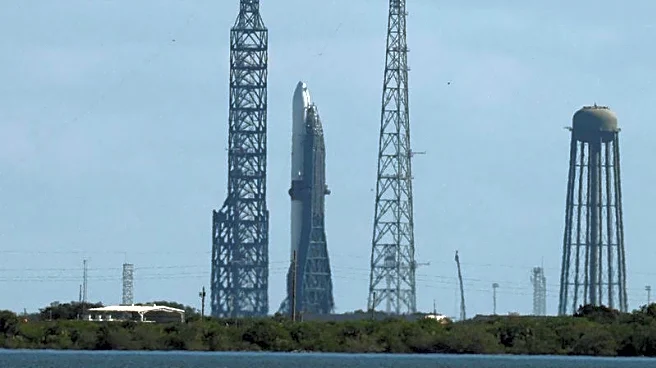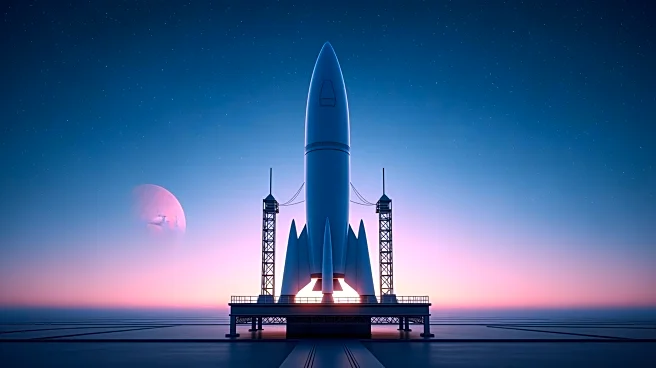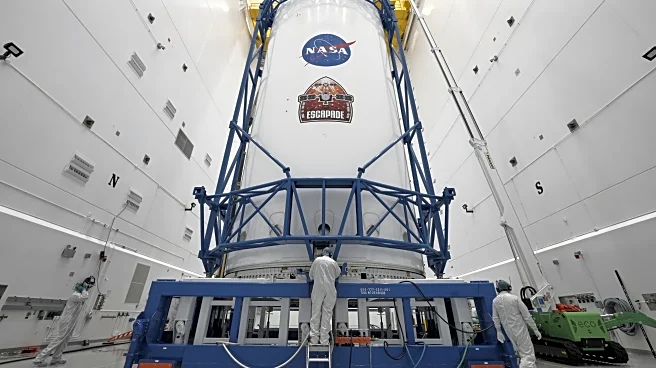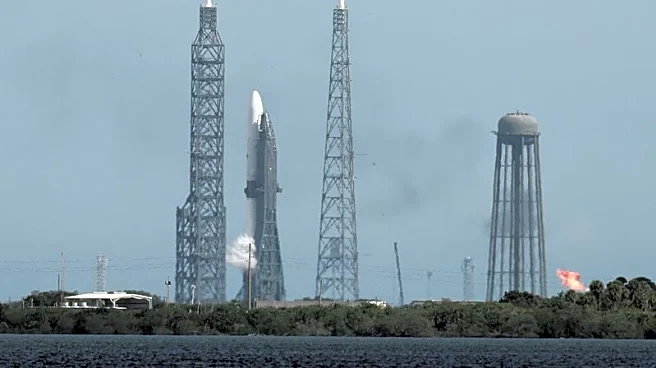What's Happening?
NASA and the European Space Agency (ESA) are finalizing preparations for the launch of the Sentinel-6B satellite, designed to measure sea levels across 90% of the Earth's oceans. The satellite, part of the Copernicus
Sentinel-6/Jason-CS mission, will provide crucial data on sea level rise, atmospheric temperature, and humidity. The launch is scheduled for November 17, 2025, from Vandenberg Space Force Base in California, using a SpaceX Falcon 9 rocket. Recent prelaunch activities included testing solar arrays, fueling the spacecraft, and encapsulating it within the payload fairing. A Flight Readiness Review confirmed the satellite's readiness for final launch preparations, with a Launch Readiness Review set for November 15.
Why It's Important?
The Sentinel-6B satellite will play a vital role in monitoring global sea level changes, which are critical for public safety, urban planning, and protecting commercial and defense interests. By continuing the data record initiated by previous satellites, Sentinel-6B will help scientists understand the impacts of climate change on ocean levels. This information is essential for policymakers and researchers working to mitigate the effects of rising sea levels on coastal communities and ecosystems. The satellite's data will also support international efforts to address climate change and its consequences.
What's Next?
Following the successful launch, Sentinel-6B will take over from its predecessor, Sentinel-6 Michael Freilich, as the primary reference satellite for global sea level measurements. The data collected will be used to improve climate models and inform strategies for adapting to changing ocean conditions. The mission will continue to build on the legacy of the TOPEX/Poseidon and Jason series satellites, providing valuable insights into Earth's changing seas.













